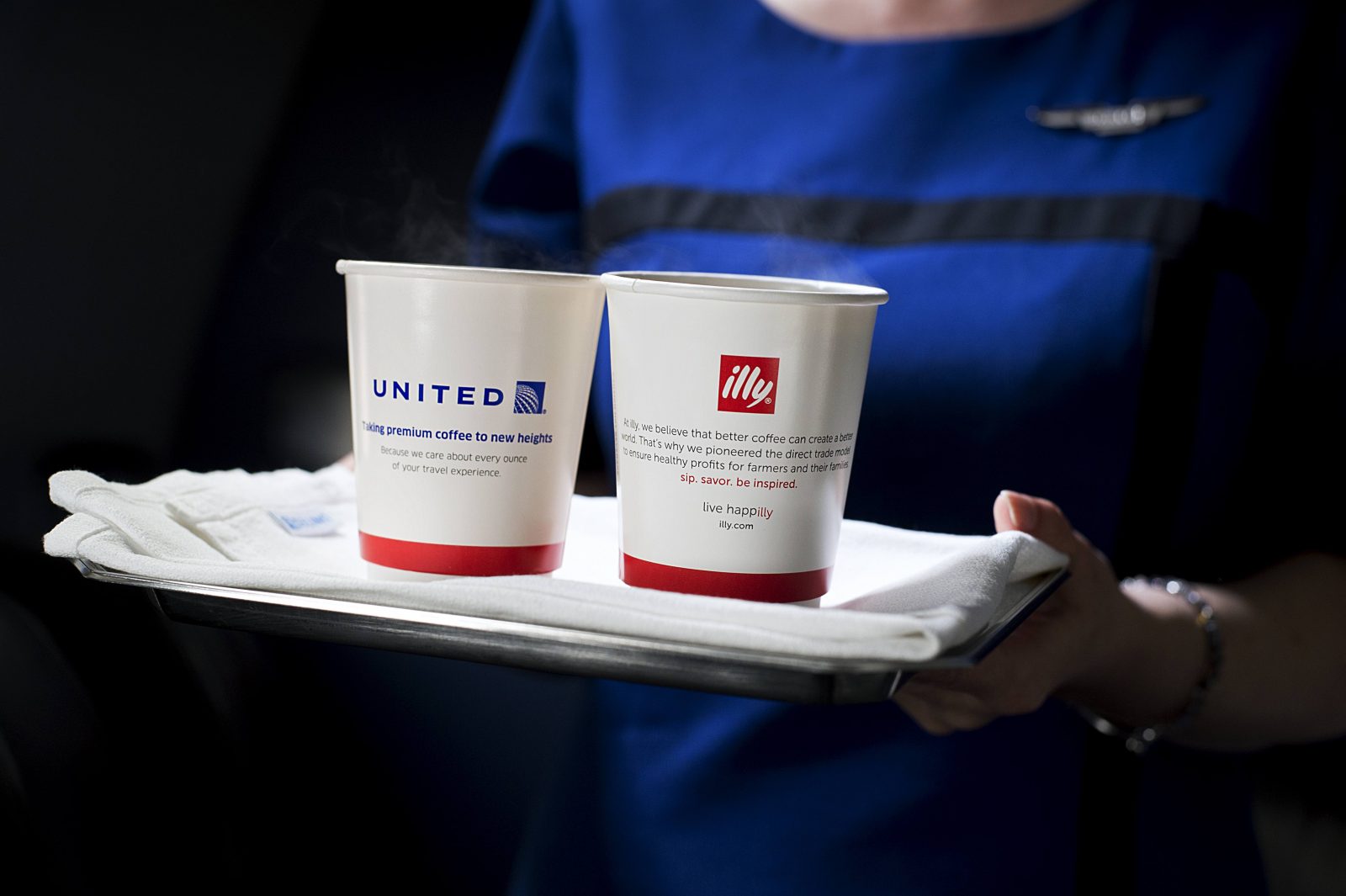
Our addiction to coffee seems insatiable. Estimates suggest around 400 million cups of the drink are consumed every day in the United States alone. Back in 2013, the National Coffee Association concluded that a staggering 83% of U.S. adults drank coffee in some form or another. And it’s not just Americans who are obsessed with their daily cup of joe.
Between 2015 and 2020, worldwide coffee consumption is expected to have risen by 25% – the International Coffee Organization puts that rise down to the Westernization of societies in emerging economies like India, China and in Latin America. No wonder international airlines are now in a race to up their coffee game – the airline coffee wars have begun.
Unsurprisingly, airlines in the United States have understood the importance of what coffee they serve onboard for years. jetBlue partnered with Dunkin’ Donuts back in 2006, citing joint research between Dunkin’ and jetBlue which revealed passengers thought coffee was the one beverage airlines could do the most to improve. Dunkin’ has been the sole coffee supplier to the New York-based airline ever since.
Other airlines were quick to respond with their own big-name coffee brand collaborations. Delta Air Lines began serving Starbucks coffee on limited routes in 2013 and then expanded the partnership across its entire worldwide network in 2015. Alaska Airlines, based in the popular coffee chain’s hometown of Seattle also, unsurprisingly, serves Starbucks coffee.
Meanwhile, United Airlines went for a slightly different tact in 2016, launching a high-profile partnership with premium Italian coffee brand, Illy. United said it chose Illy because it offered the “gold standard of premium coffee”, claiming it would provide an “elevated, distinctive experience” for passengers.
And now European airlines have decided they have to opt their coffee game. The Dutch airline, KLM will soon start serving Douwe Egberts coffee (a homegrown Dutch brand) on all its flights – the airline said it had sourced a sustainable coffee which has been specially blended to taste good at altitude.
British Airways has also developed a bespoke blend of coffee with its new coffee suppliers, Union Hand-Roasted Coffee – one which should work well at 35,000 feet. Sourced from Peru the medium roast blend is said to have espresso tasting notes of chocolate, pecan, and caramel.

“We have put British brand, Union Coffee, through its paces with extensive taste testing and it works incredibly well at altitude, where richness, depth and complexity of flavour are critical as they cut through the effect of altitude on our taste buds,” explained Sarah Klatt-Walsh who’s Head of Product at British Airways.
But even with these big coffee brand’s putting their name on the brown stuff served onboard, it probably still won’t taste like the coffee you enjoy from your local cafe – or at home for that matter.
The airlines are quick to point out the effect that altitude can have on our perception of taste. The dry environment of a pressurised plane cabin can severely dampen our tastebuds and even affect our ability to smell. That’s why airline chefs add so much seasoning to dishes – wasabi is a new favourite, while curries are always popular and salt (was once) used liberally.
This is the real reason coffee tastes so bad on a plane
What airlines aren’t quite so willing to admit, however, is that the way coffee is normally brewed onboard a plane doesn’t do anything to help the taste. Part of the problem does still arise from being up in the air – water boils at a lower temperature at altitude which means the brew lacks the depth that it would achieve on the ground.
The other problem though is with the equipment used to brew the coffee. While some premium passengers might get to enjoy a coffee from a proper espresso machine, the rest of us have to accept a far less technical brew.
Forget fancy coffee filters or even a cafetière – instead, many airlines use coffee bags. Dunked into a pot of boiling water, the quality of your coffee is largely dependent on how much (or little) the flight attendant has bothered swish the bag around the pot. Some airlines even use freeze-dried coffee for the ultimate in coffee making convenience.
So it might still be best to enjoy your coffee exclusively on the ground. After all, the health experts do advise us to avoid caffeine at altitude!
Related
Mateusz Maszczynski honed his skills as an international flight attendant at the most prominent airline in the Middle East and has been flying ever since... most recently for a well known European airline. Matt is passionate about the aviation industry and has become an expert in passenger experience and human-centric stories. Always keeping an ear close to the ground, Matt's industry insights, analysis and news coverage is frequently relied upon by some of the biggest names in journalism.







